What if the skyscrapers of tomorrow were built not by hard-hatted workers, but by swarms of tireless robots, buzzing around construction sites like bees in a hive? This isn’t a scene from a sci-fi movie—it’s the future of construction, and it’s already unfolding before our eyes. Autonomous construction robots, powered by artificial intelligence, are stepping onto job sites, laying bricks, pouring concrete, and assembling structures with a precision that would make even the most skilled human worker jealous.
The construction industry, often seen as slow to adopt new technologies, is now at the forefront of a robotic revolution. Think about it: construction is one of the largest industries in the world, yet it’s plagued by inefficiencies, labor shortages, and safety concerns. Enter AI-driven robots, which promise to tackle these issues head-on. These machines don’t need coffee breaks, don’t get tired, and certainly don’t complain about overtime. They’re here to work, and they’re here to change the game.
But this isn’t just about robots taking over jobs. It’s about reimagining how we build. Visionaries like Rodney Brooks, co-founder of Boston Dynamics, have long predicted the rise of intelligent machines in industries like construction. Similarly, Fei-Fei Li, a leading AI researcher at Stanford University, has emphasized how AI can transform physical industries. And let’s not forget Skylar Tibbits, whose work at MIT’s Media Lab explores how robotics and AI can redefine architecture and construction.
So, how close are we to a world where robots build our homes, offices, and cities? What does this mean for the millions of construction workers worldwide? And what challenges must we overcome to make this vision a reality? Let’s dive into the rise of autonomous construction robots and explore how they’re building the future—one robot at a time.
1. The Rise of Autonomous Construction Robots
1.1 From Concept to Reality: A Brief History
The idea of robots building things isn’t new. In fact, it dates back to the 1980s and 1990s, when researchers first began experimenting with robotic construction. Back then, the technology was clunky, expensive, and limited in scope. Fast forward to today, and we’ve got robots like Hadrian X, a bricklaying robot that can lay 1,000 bricks per hour—something no human mason could ever dream of. Then there’s SAM100, a semi-automated mason that works alongside humans to speed up bricklaying projects.
What’s changed? Breakthroughs in AI, machine learning, and robotics have made these systems smarter, faster, and more adaptable. Early experiments were like teaching a toddler to stack blocks—slow and error-prone. Today’s robots are more like seasoned architects, capable of making real-time decisions and adapting to unexpected challenges.
1.2 Key Technologies Driving the Revolution
So, what’s under the hood of these robotic builders? Let’s break it down:
- AI and Machine Learning: These robots aren’t just following pre-programmed instructions. They’re learning from their environment, improving their performance over time, and even predicting potential issues before they arise.
- Computer Vision: Imagine a robot that can “see” and recognize objects, navigate around obstacles, and adjust its movements in real-time. That’s computer vision in action.
- Advanced Sensors and IoT: These robots are equipped with sensors that allow them to “feel” their surroundings, ensuring they don’t accidentally knock over a wall or drop a load of concrete.
- 3D Printing and Modular Construction: Some robots are even using 3D printing to create entire structures layer by layer, while others assemble pre-fabricated modules like giant LEGO sets.
1.3 Current Applications in the Field
You might be wondering, “Are these robots actually being used today?” The answer is a resounding yes. Take Built Robotics, for example. This company is turning traditional construction equipment—like excavators and bulldozers—into autonomous machines that can dig, grade, and move materials without a human operator. Then there’s Boston Dynamics, whose robots are being tested for tasks like inspecting construction sites and carrying heavy loads.
Drones are also playing a big role. Companies like DJI are using drones to survey construction sites, monitor progress, and even deliver materials to hard-to-reach areas. And let’s not forget 3D-printed homes, like those created by ICON, which are being built in record time using robotic arms and advanced materials.
These examples are just the tip of the iceberg. As the technology continues to evolve, we’re likely to see even more innovative applications—and perhaps even fully autonomous construction sites in the near future.
2. The Benefits of AI-Driven Construction
2.1 Increased Efficiency and Speed
Picture this: a construction site where robots work tirelessly, day and night, without needing coffee breaks or complaining about overtime. These autonomous machines can operate 24/7, dramatically reducing construction timelines. For example, the Hadrian X bricklaying robot can lay 1,000 bricks per hour—something that would take a human crew days to accomplish. That’s like swapping a horse-drawn carriage for a Tesla on the Autobahn.
Companies like Built Robotics are already using AI-powered bulldozers and excavators to complete projects up to 50% faster. Imagine building a house in weeks instead of months or erecting a skyscraper in months instead of years. The future of construction isn’t just fast—it’s lightning-fast.
2.2 Improved Safety and Reduced Risk
Construction sites are notoriously dangerous. Falls, equipment malfunctions, and accidents are all too common. But robots don’t get tired, distracted, or scared. They can handle hazardous tasks like welding, demolition, or working at heights without breaking a sweat (or a bone).
Take Boston Dynamics’ Spot robot, for example. This nimble bot can navigate uneven terrain, inspect dangerous areas, and even carry tools. It’s like having a construction worker who’s part mountain goat and part superhero. Plus, AI-powered predictive maintenance can prevent equipment failures before they happen, reducing the risk of accidents even further.
2.3 Cost Savings and Sustainability
Let’s talk money. Labor costs are one of the biggest expenses in construction. By replacing human workers with robots, companies can save millions. But it’s not just about cutting costs—it’s about doing more with less. AI-driven robots can optimize material usage, reducing waste and making construction more sustainable.
For instance, 3D printing robots like those from ICON can create entire homes using less material than traditional methods. These homes are not only cheaper but also more energy-efficient. It’s like building a house with Legos—except the Legos are made of concrete, and the builder is a robot.
3. Challenges and Limitations
3.1 Technical Hurdles
As cool as AI-driven construction sounds, it’s not all smooth sailing. Integrating multiple robotic systems is like herding cats—except the cats are high-tech machines with their own quirks. Ensuring these robots can work together seamlessly in diverse environments is a massive challenge.
For example, a robot that works perfectly in a controlled lab might struggle on a muddy, uneven construction site. And while AI has come a long way, it still struggles with unpredictable scenarios. Imagine a robot trying to figure out what to do when a stray dog wanders onto the site. (Spoiler: It might just freeze.)
3.2 Regulatory and Ethical Concerns
Building codes and safety standards weren’t written with robots in mind. Navigating these regulations is like trying to fit a square peg into a round hole. Governments and industry leaders will need to work together to create new rules that ensure safety without stifling innovation.
Then there’s the ethical elephant in the room: job displacement. What happens to the millions of construction workers worldwide if robots take over? While new roles in robotics maintenance and AI oversight will emerge, the transition won’t be easy. It’s like switching from typewriters to computers—some people will adapt, but others might get left behind.
3.3 Public Perception and Acceptance
Let’s face it: people are skeptical of robots. The idea of machines building our homes and offices can feel unsettling, like something out of a sci-fi movie. Overcoming this skepticism will require education and transparency.
Companies like Autodesk are already leading the charge by showcasing the benefits of AI-driven construction through public demonstrations and campaigns. It’s like convincing someone to try sushi for the first time—once they see how good it is, they’ll be hooked.
4. The Role of AI in Design and Planning
4.1 Generative Design and AI-Optimized Blueprints
Imagine a world where buildings are designed not just by architects, but by algorithms. Generative design, powered by AI, is making this a reality. This technology uses machine learning to explore thousands of design options, optimizing for factors like cost, energy efficiency, and structural integrity. For example, Autodesk’s generative design tools have been used to create everything from lightweight car parts to entire building layouts. The results? Designs that are not only innovative but also highly efficient.
Take the case of the 1000 Trees project in Shanghai, where AI helped optimize the placement of trees and structural elements to create a harmonious blend of nature and architecture. This is just the beginning. AI is also being integrated with Building Information Modeling (BIM), allowing architects and engineers to create detailed, data-rich blueprints that can be easily adjusted in real-time.
4.2 Real-Time Project Management
Construction projects are notorious for delays and cost overruns. Enter AI-driven project management tools. These platforms use predictive analytics to anticipate potential bottlenecks and suggest solutions before they become problems. For instance, Procore and Buildots are leveraging AI to track progress, allocate resources, and even predict delays based on historical data and real-time inputs.
Here’s how it works:
- Data Collection: Sensors and cameras on-site gather data on everything from material usage to worker activity.
- Analysis: AI algorithms analyze this data to identify patterns and predict potential issues.
- Action: Project managers receive real-time alerts and recommendations to keep the project on track.
This level of oversight not only saves time and money but also reduces stress for everyone involved. Imagine knowing exactly when a shipment of materials will arrive or which tasks need immediate attention—AI makes this possible.
4.3 Collaboration Between Humans and Machines
While AI and robots are taking on more tasks, human oversight remains crucial. The future of construction isn’t about replacing humans—it’s about enhancing their capabilities. Workers will need to be trained to operate and maintain these advanced systems, creating new opportunities for skilled labor.
For example, Built Robotics is training construction workers to operate autonomous bulldozers and excavators. These machines handle the heavy lifting, while humans focus on higher-level tasks like planning and problem-solving. It’s a win-win: robots increase efficiency, and workers gain valuable new skills.
This hybrid approach also extends to design. AI can generate thousands of design options, but it’s up to humans to choose the one that best meets the project’s goals. This collaboration between humans and machines is the key to unlocking the full potential of AI-driven construction.
5. The Future of AI-Driven Construction
5.1 Fully Autonomous Construction Sites
Picture a construction site with no human workers—just robots working in perfect harmony. This vision is closer than you might think. Swarm robotics, where multiple robots work together to complete complex tasks, is already being tested in labs and small-scale projects. For example, researchers at ETH Zurich have developed robots that can build structures using bricks and mortar, all without human intervention.
Here’s what a fully autonomous construction site might look like:
- Robotic Cranes: These machines lift and place heavy materials with precision.
- 3D Printing Robots: They create entire walls or even entire buildings layer by layer.
- Drones: They survey the site and monitor progress in real-time.
While we’re not quite there yet, experts predict that fully autonomous construction sites could become a reality within the next decade. The key will be integrating these systems seamlessly and ensuring they can handle the unpredictability of real-world construction environments.
5.2 Integration with Smart Cities
AI-driven construction isn’t just about building faster or cheaper—it’s about building smarter. As cities around the world embrace the concept of smart cities, AI-driven construction will play a crucial role. Imagine buildings that are not only energy-efficient but also connected to a city-wide network of sensors and data systems.
For example, in Singapore, the government is using AI to optimize urban planning and construction. Buildings are designed to collect data on energy usage, air quality, and even foot traffic, which is then used to improve city services. This level of integration is only possible with AI-driven construction techniques.
Key benefits of integrating AI-driven construction with smart cities include:
- Energy Efficiency: AI-optimized designs reduce energy consumption.
- Data-Driven Decisions: Real-time data helps city planners make informed decisions.
- Sustainability: AI reduces waste and promotes the use of eco-friendly materials.
5.3 Global Implications and Opportunities
The impact of AI-driven construction extends far beyond individual projects. In developing countries, where housing shortages and infrastructure gaps are major challenges, this technology could be a game-changer. By leapfrogging traditional construction methods, these countries could build faster, cheaper, and more sustainably.
For example, in Nairobi, Kenya, a startup called 14Trees is using 3D printing robots to build affordable homes in just 12 hours. This approach not only addresses the housing crisis but also creates jobs and stimulates local economies.
On a global scale, international collaboration will be key to advancing this technology. Organizations like the World Bank and the United Nations are already exploring how AI-driven construction can help achieve sustainable development goals. By working together, we can ensure that the benefits of this technology are shared by all.
6. AI Solutions: How Would AI Tackle This Issue?
If I were an AI tasked with solving the challenges of autonomous construction, here’s how I would approach the problem:
6.1 Step 1: Data Collection and Analysis
First, I’d gather data from existing construction sites, including environmental conditions, material properties, and human workflows. This data would be fed into machine learning algorithms to identify patterns and inefficiencies. For example, Built Robotics already uses AI to optimize earthmoving equipment, but scaling this to entire sites requires a more comprehensive dataset. Collaborations with institutions like MIT and Stanford University could provide access to cutting-edge research and real-world case studies.
6.2 Step 2: Simulation and Training
Next, I’d create digital twins of construction sites to simulate robotic operations. Using platforms like Autodesk’s Digital Twin, I’d train AI models through reinforcement learning to optimize performance. For instance, robots could practice laying bricks in a virtual environment before attempting it in the real world. This approach has already been tested by Boston Dynamics, whose robots learn complex tasks through simulation.
6.3 Step 3: Integration and Testing
Once the AI models are trained, I’d develop modular robotic systems that can be easily integrated into existing workflows. Companies like KUKA Robotics have pioneered modular robotic arms, but integrating them with AI-driven systems requires rigorous testing. Initial field tests would be conducted in controlled environments, such as the ETH Zurich robotics lab, to ensure reliability and precision.
6.4 Step 4: Continuous Improvement
After deployment, I’d implement feedback loops to allow robots to learn from real-world experiences. Predictive analytics would be used to anticipate and address potential issues, such as material shortages or equipment failures. This approach is similar to how NVIDIA uses AI to optimize data center operations, but applied to construction sites.
6.5 Step 5: Scaling and Deployment
Finally, I’d gradually scale up operations, starting with small projects and expanding to larger ones. Collaboration with industry stakeholders, such as Caterpillar and Skanska, would ensure widespread adoption. By Year 2, the goal would be to achieve full autonomy on large-scale construction sites, with robots working alongside humans in hybrid teams.
Action Schedule/Roadmap (Day 1 to Year 2)
Day 1: Assemble a team of experts in AI, robotics, construction, and ethics. Key players would include Fei-Fei Li (AI), Rodney Brooks (robotics), and Skylar Tibbits (architecture).
Day 2: Begin data collection from existing construction sites, leveraging partnerships with Construction.com and Dodge Data & Analytics.
Week 1: Develop a digital twin of a small construction site using Autodesk software.
Week 2: Start training AI models using simulated data, with support from DeepMind and OpenAI.
Month 1: Build and test a prototype robotic system in collaboration with Boston Dynamics and KUKA Robotics.
Month 2: Conduct initial field tests in a controlled environment, such as the ETH Zurich robotics lab.
Year 1: Deploy robotic systems on small-scale construction projects, starting with residential homes and small commercial buildings.
Year 1.5: Expand operations to medium-sized projects, such as schools and hospitals, with support from Skanska and Caterpillar.
Year 2: Achieve full autonomy on large-scale construction sites, such as skyscrapers and infrastructure projects, with robots working alongside humans in hybrid teams.
Building the Future, One Algorithm at a Time
The AI-driven construction site is no longer a distant dream—it’s a tangible reality that promises to reshape the way we build. Imagine a world where skyscrapers rise in weeks instead of years, where construction sites are safer, quieter, and more efficient. This future is not just possible; it’s inevitable. But as with any technological revolution, the path forward is fraught with challenges.
From technical hurdles to ethical dilemmas, the journey to fully autonomous construction sites will require collaboration, innovation, and a willingness to rethink traditional methods. Companies like Built Robotics and Boston Dynamics are already leading the charge, but the real heroes will be the engineers, architects, and policymakers who embrace this change.
What does this mean for the millions of construction workers worldwide? While some jobs may be displaced, new opportunities will emerge in robotics maintenance, AI oversight, and design. The key is to ensure that this transition is inclusive and equitable, providing training and support for those affected.
As we stand on the brink of this new era, one thing is clear: the future of construction is being built one algorithm at a time. The question is, are we ready to embrace it?
What do you think about the rise of AI-driven construction? Are you excited about the possibilities, or do you have concerns about the implications? Share your thoughts in the comments below, and don’t forget to subscribe to our newsletter for more insights into the future of technology. Together, we can build a brighter future—one robot at a time.
Frequently Asked Questions (FAQ)
Q1: Will AI-driven construction eliminate jobs?
While some traditional construction jobs may be displaced, the rise of AI-driven construction will create new roles. Think of it like the shift from manual labor to operating machinery during the Industrial Revolution. Jobs in robotics maintenance, AI oversight, and advanced design will become more common. Companies like Boston Dynamics and Built Robotics are already training workers to manage and maintain these systems. The key is reskilling the workforce to adapt to this new era.
Q2: How safe are autonomous construction robots?
Autonomous construction robots are designed with safety as a top priority. They use advanced sensors, computer vision, and AI to navigate construction sites and avoid accidents. For example, Boston Dynamics' Spot robot can inspect hazardous areas without putting humans at risk. However, human oversight is still essential to ensure everything runs smoothly. Think of it like a self-driving car—it’s smart, but you still need a driver for emergencies.
Q3: Can AI-driven construction work in remote areas?
Absolutely! In fact, autonomous construction robots are perfect for remote or hard-to-reach locations. For example, ICON, a company specializing in 3D-printed homes, has used robots to build houses in rural areas where skilled labor is scarce. These robots can work in extreme conditions, from deserts to disaster zones, making them a game-changer for global infrastructure development.
Q4: How much does it cost to implement AI-driven construction?
The initial investment in AI-driven construction can be high, but the long-term savings are significant. Here’s a quick breakdown:
- Initial Costs: Purchasing robots, AI software, and training workers.
- Long-Term Savings: Reduced labor costs, less material waste, and faster project completion.
For example, Fastbrick Robotics' Hadrian X can lay bricks 20 times faster than a human, drastically cutting construction timelines. Over time, these efficiencies make AI-driven construction cost-effective.
Q5: What’s the environmental impact of AI-driven construction?
AI-driven construction is actually better for the environment. Here’s why:
- Less Waste: AI optimizes material usage, reducing waste by up to 30%.
- Energy Efficiency: AI-designed buildings use less energy for heating, cooling, and lighting.
- Sustainable Materials: Robots can work with eco-friendly materials like recycled concrete and bamboo.
Companies like Autodesk are leading the charge in creating sustainable, AI-optimized designs. It’s a win-win for builders and the planet.
Q6: Can robots build skyscrapers?
Not yet, but they’re getting closer. While robots excel at smaller projects like homes and bridges, building skyscrapers requires a level of complexity that current AI systems are still mastering. However, companies like KUKA are developing robotic cranes and assembly systems that could one day tackle high-rise construction. It’s only a matter of time before robots are building the next Burj Khalifa.
Q7: What happens if a robot makes a mistake?
Robots are programmed to minimize errors, but mistakes can still happen. That’s why human oversight is crucial. For example, if a bricklaying robot like Hadrian X misaligns a brick, a human operator can step in to correct it. Additionally, AI systems use machine learning to improve over time, reducing the likelihood of errors in the future.
Q8: How do robots handle unpredictable weather on construction sites?
Autonomous construction robots are equipped with advanced sensors and AI to adapt to changing conditions. For example, Built Robotics has developed autonomous excavators that can operate in rain, snow, and even extreme heat. These robots use real-time data to adjust their operations, ensuring they can work safely and efficiently in any weather.
Q9: Will AI-driven construction make buildings cheaper?
Yes, but not immediately. While the upfront costs of AI-driven construction are high, the long-term savings will eventually lead to more affordable buildings. For example, 3D-printed homes from companies like ICON can cost up to 50% less than traditional homes. As the technology becomes more widespread, prices will continue to drop, making housing more accessible for everyone.
Q10: What’s the biggest challenge facing AI-driven construction?
The biggest challenge is public acceptance. Many people are skeptical about robots taking over construction jobs or worry about the safety of autonomous systems. To overcome this, companies need to focus on education and transparency. For example, Boston Dynamics regularly shares videos of their robots in action to build trust and excitement. The key is showing people that AI-driven construction isn’t just about replacing humans—it’s about creating a better, safer, and more efficient future.
Q11: Can AI-driven construction help with disaster relief?
Absolutely. Autonomous construction robots can be deployed quickly to disaster zones to build temporary shelters, repair infrastructure, and clear debris. For example, drones from DJI have been used to assess damage after hurricanes, while robots from Boston Dynamics can navigate unstable terrain to deliver supplies. These technologies can save lives and speed up recovery efforts.
Q12: What’s next for AI-driven construction?
The future is bright! Here are a few exciting developments on the horizon:
- Swarm Robotics: Teams of small robots working together to build large structures.
- AI-Designed Cities: Entire neighborhoods planned and built by AI for maximum efficiency and sustainability.
- Space Construction: Robots building habitats on the Moon or Mars, like those envisioned by SpaceX and NASA.
The possibilities are endless, and the construction industry is just scratching the surface of what’s possible with AI.
Wait! There's more...check out our gripping short story that continues the journey: The Last Crane Operator
Disclaimer: This article may contain affiliate links. If you click on these links and make a purchase, we may receive a commission at no additional cost to you. Our recommendations and reviews are always independent and objective, aiming to provide you with the best information and resources.
Get Exclusive Stories, Photos, Art & Offers - Subscribe Today!
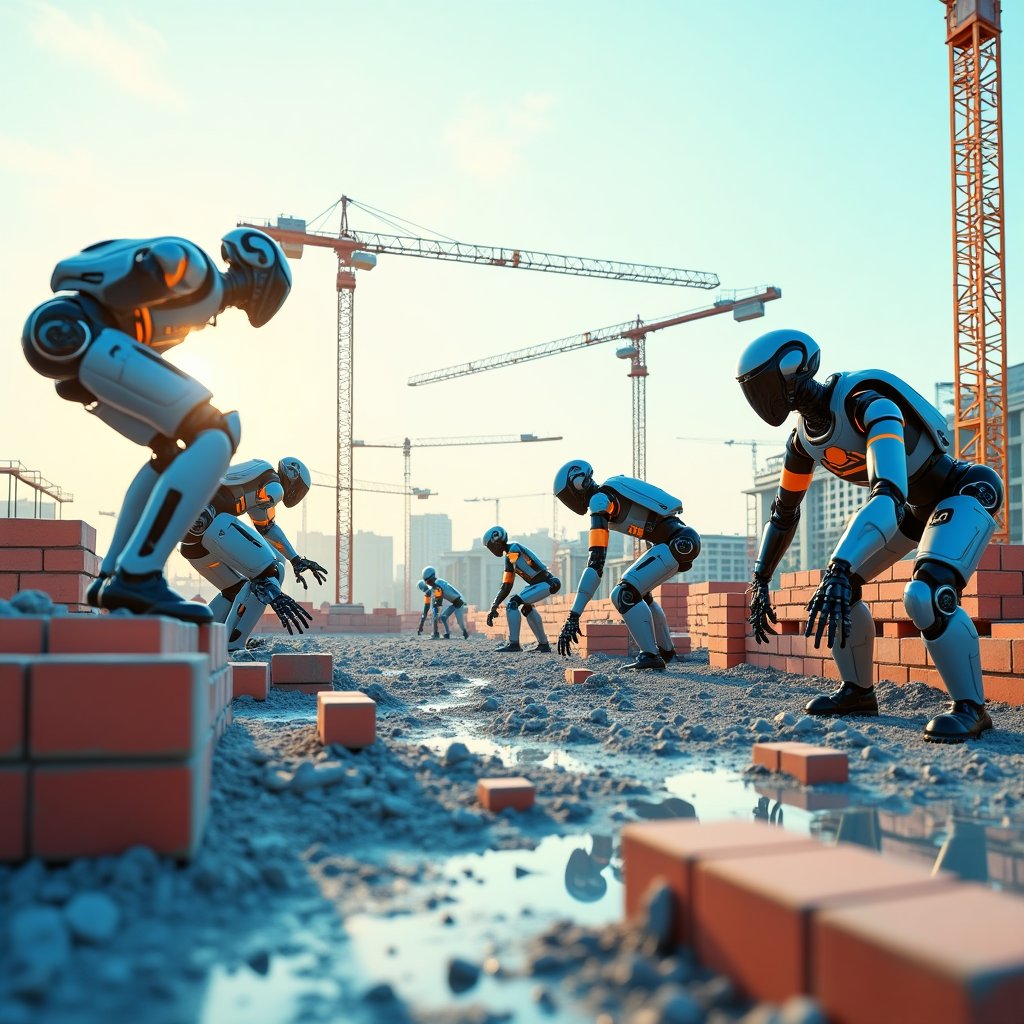
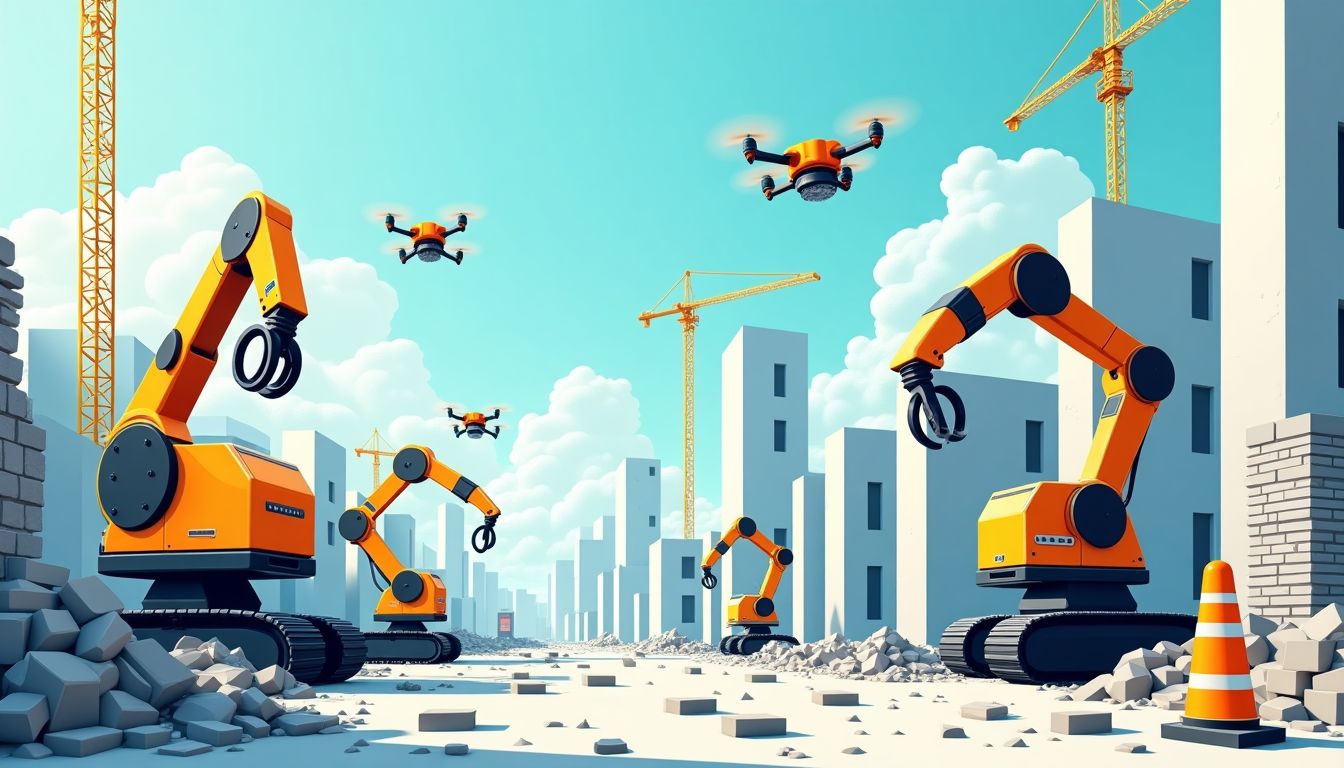
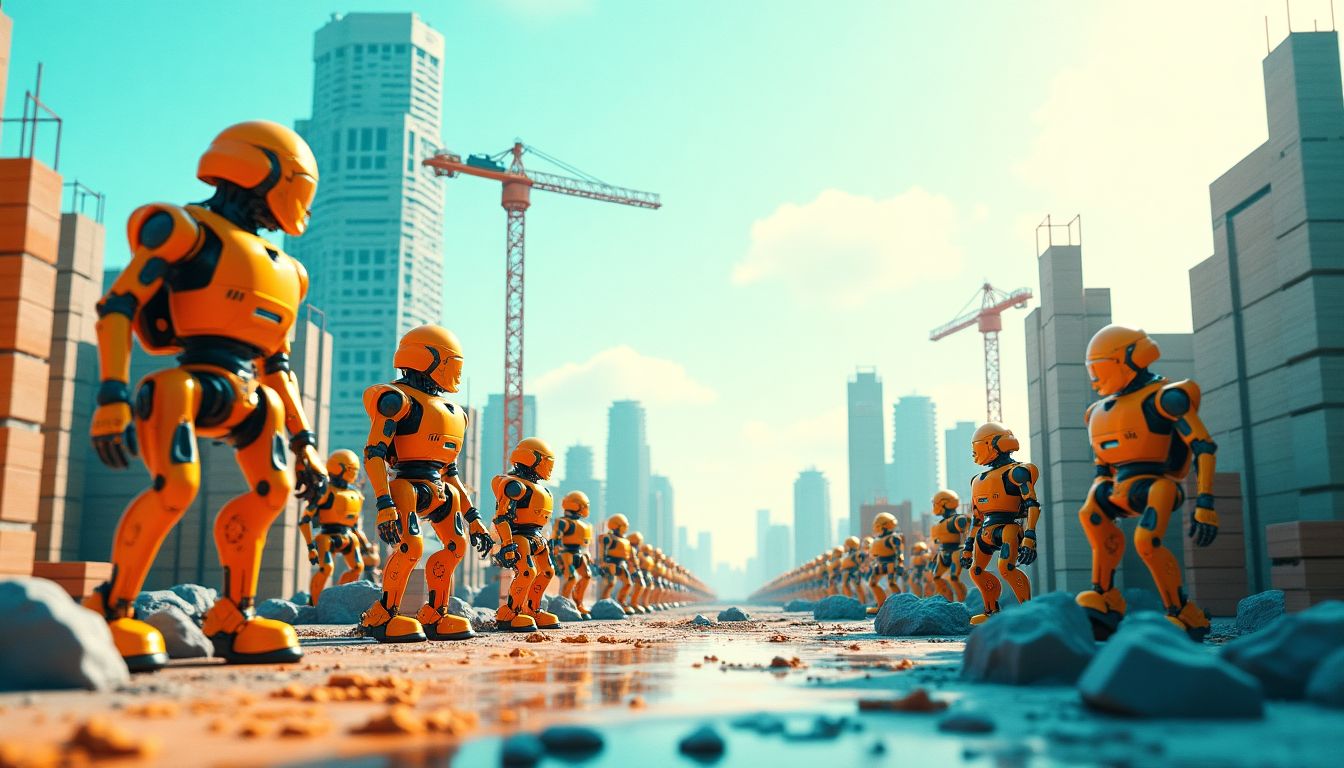
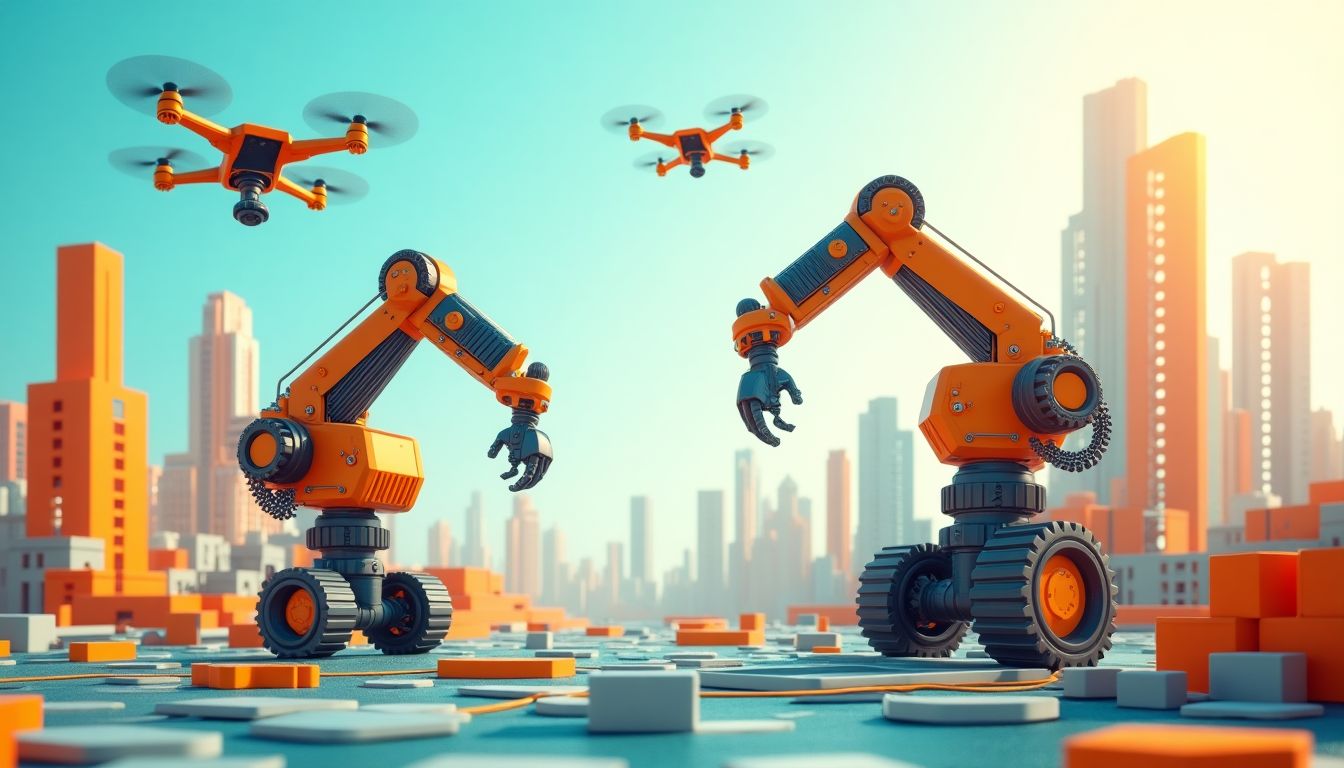
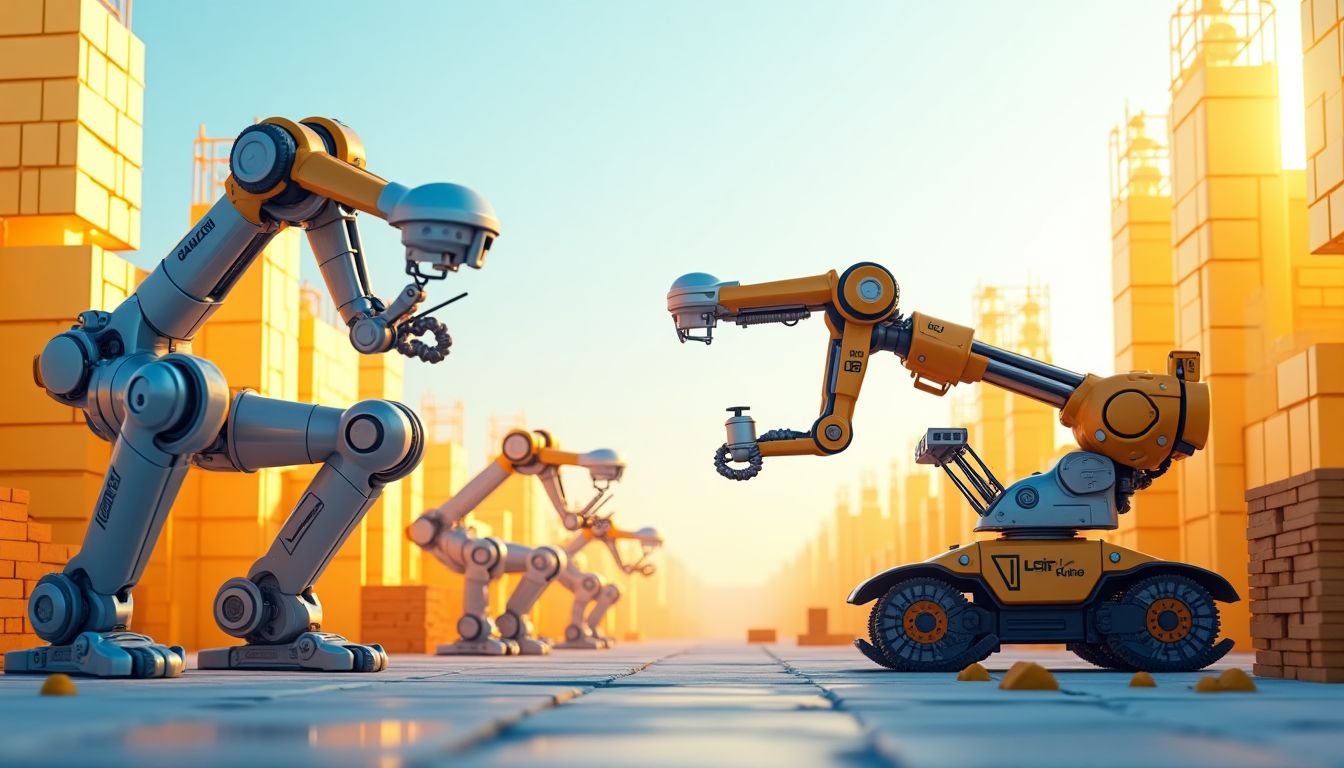
























Post Comment
You must be logged in to post a comment.